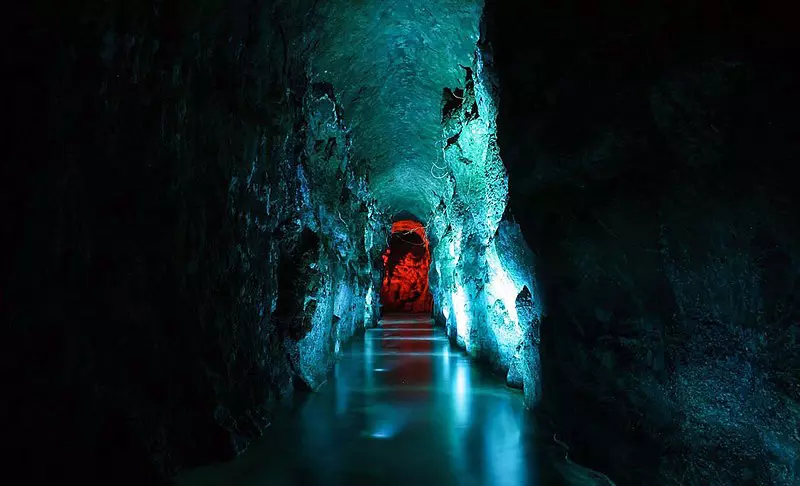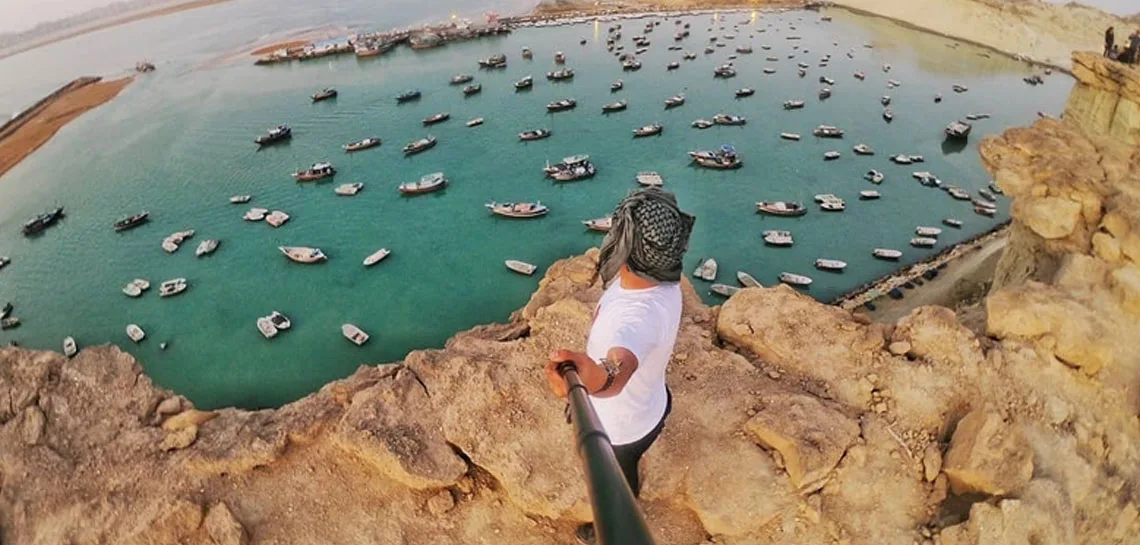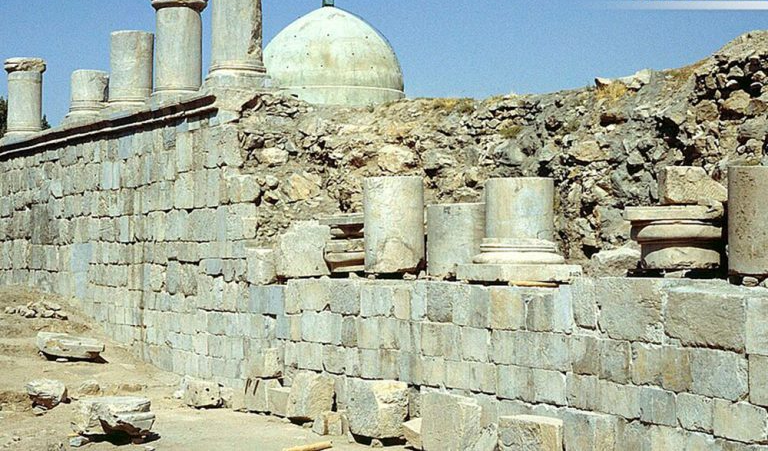Qasabeh Qanat: A Historical Wonder in Iran
Everything You Need to Know about Qasabeh Qanat:
Location of Qasabeh Qanat:
Qasabeh Qanat is situated in the southern outskirts of the city of Gonabad, approximately three kilometers from the Gonabad-Kakhk Road. This ancient qanat is located 295 kilometers south of Mashhad.
Access Route:
To reach Qasabeh Qanat, use your personal vehicle from Hamzeh Square, entering Malmazafar Boulevard. To reach the vicinity of the qanat, take the side road near Agha Seyyed Hasan Cemetery. Otherwise, continue on the main route and enter Kariz Street near the Imam Reza (AS) Town. This route leads to the parking area for Qasabeh Qanat. After obtaining your ticket and entering the Gonabad Qasabeh Qanat World Heritage site, proceed to one of the qanat entrances with a short walk.
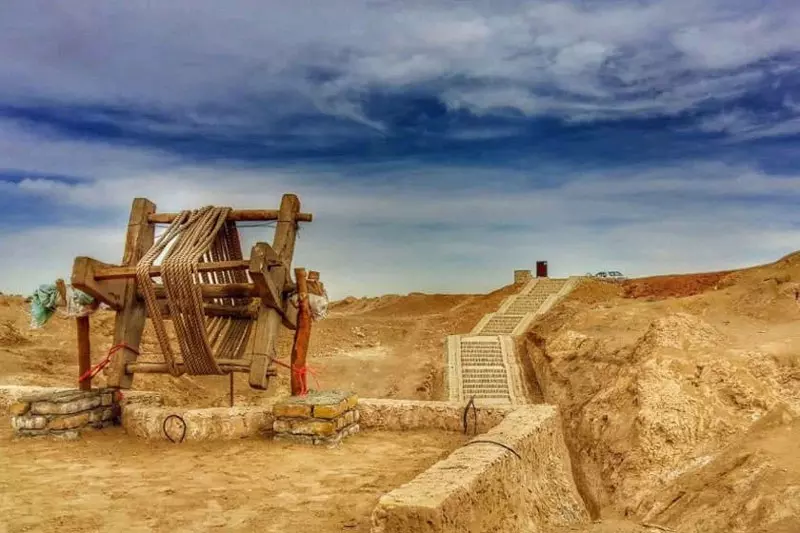
Qasabeh Qanat Overview:
Qasabeh Qanat is one of the fascinating attractions in Gonabad, representing one of the most astonishing achievements of human construction and a symbol of harmony between humanity and nature. This qanat holds the record as the oldest and deepest underground aqueduct globally, dating back 2,500 to 2,700 years. In the year 1379 AH (Islamic calendar), it was officially registered as National Heritage Site number 2963 by the Cultural Heritage Organization. Today, this historical marvel is also listed in UNESCO’s World Heritage List.
Explore the wonders of Qasabeh Qanat, including the famous “Ghal Shoghal” entrance leading you deep into the qanat, and the second entrance further away, guiding you through narrow and long metal stairs into its depths.
Visiting Qasabeh Qanat:
Qasabeh Qanat is a testament to the ingenuity of ancient Iranian engineering, showcasing the unique approach to water management in the region. It has been recognized globally for its historical significance and is a must-visit destination for those interested in exploring the rich cultural and technological heritage of Iran.
Whether you are drawn to its ancient history, architectural marvels, or the mystical legends surrounding Qasabeh Qanat, a visit to this site promises a fascinating journey into the depths of time.
Address: Khorasan Razavi Province, Gonabad County, 3 kilometers south of Gonabad city
Visiting Conditions for Qasabeh Qanat:
Qasabeh Qanat stands as one of the premier tourist destinations in Khorasan Razavi province, attracting numerous visitors every year. Currently, the initial 500 meters of the qanat are open for exploration, while the remaining sections require reinforcement and the establishment of recreational facilities. Sixty percent of the qanat’s wells are sealed, leaving only 40% with a water supply of 150 liters per second.
Admission Fees:
As of the year 1402, the admission fee for Iranian tourists is 20,000 Tomans, while for foreign tourists, it is calculated at 200,000 Tomans. Payment of this fee provides access to tourist information as well.
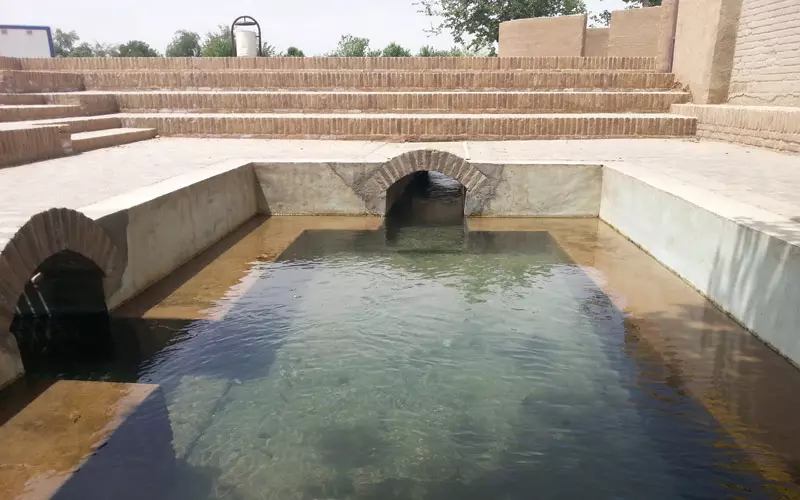
Visiting Hours:
Qasabeh Qanat is open for visitors daily from 8:00 to 13:00. However, in case of closed gates, contact the qanat guide using the provided phone number. Plan for one to two hours to explore all sections of the qanat.
Wonders of Qasabeh Qanat:
Gonabad’s qanats are divided into mountainous and plain categories. Mountainous qanats, typically dug through steep valleys, are fed by rain and snow. Their water supply ranges from 1 to 25 liters per second, with lengths between 50 to 500 meters. On the other hand, plain qanats, excavated in relatively flat terrains, must traverse long distances to reach underground water tables, showcasing the impressive capabilities of human ingenuity. Qasabeh Qanat, as the largest qanat in Gonabad, is considered a wonder of Iran and human civilization.
History of Qasabeh Qanat:
The history of Qasabeh Qanat dates back 2,500 to 2,700 years. Pottery fragments found near one of the qanat wells suggest that the Qasabeh branch was possibly the first and most important channel of this qanat. These pottery pieces indicate that the qanat was excavated during the Achaemenid era, around 500 years before Christ.
Legends of Qasabeh Qanat:
Fascinating stories and legends surround Qasabeh Qanat. According to local beliefs, the construction of such a grand and deep qanat could not have been the work of humans alone, suggesting the involvement of supernatural beings, such as demons. There are tales of a man named “Taher Abshenas” instructing the demons to dig a water channel when the people of the region faced a water shortage.
The city of Gonabad has been referred to by various names in different sources, including “Kenabad,” “Yenabad,” “Janabad,” “Goudarz,” “Giv,” and more. Linguistically, “Gonabad” is composed of “Gon” meaning demon and “Abad” meaning settlement or inhabited place.
Some locals believe that the original name of Gonabad was “Jan Abad,” with “Jan” referring to demons. Over time, this name transformed into “Janabad,” “Jenabad,” and eventually “Gonabad.” Others contend that the city was once called “Gon Abad,” with “Gon” meaning the sun.
These fascinating stories and linguistic nuances add layers of cultural richness to the history of Qasabeh Qanat and the city of Gonabad. Exploring this ancient site provides not only a glimpse into Iran’s technological marvels but also a journey through captivating tales that have been passed down through generations.
Architecture and Different Sections of Qasabeh Qanat:
Depth of the Qasabeh Qanat Well: 340 meters
Length of Qasabeh Qanat in Gonabad: 33 kilometers
Qasabeh Qanat, a masterpiece of water engineering and a prominent attraction in Khorasan Razavi province, is composed of two main branches and six subsidiary branches. The wellhead of the qanat is located in the northern foothills of the Siah Kooh mountain range, and the current exit is in the southern part of the area known as Qasabeh neighborhood (eastern quarter) of the city.
Qasabeh Qanat begins its course from the eastern southwestern territories of Gonabad, specifically from the area known as “Borj Ali Zamen.” This qanat, with a total length of 33,133 meters, flows in a main branch named “Qasabeh” and four branches branching off it, including Doulab Kohneh, Doulab Now, Subsidiary Branch 1, and Subsidiary Branch 2.
Sections of the Main Branch of Qasabeh Qanat:
The main branch of Qasabeh Qanat, with a length of 13,135 meters, is excavated along the full water-rich valley of Khaniak. The depth of the wellhead of the main branch is estimated to be over 200 meters. This branch served as the initial and main path of the qanat, dug during the Achaemenid era. Subsequently, during dry seasons, additional branches of the qanat were excavated. To mitigate the risk of blockages and closures, the qanat was divided into two branches 683 meters away from the wellhead. This division ensures that if one channel is blocked, water can still flow through the other.
Qasabeh Qanat Wells:
The strategic design and construction of Qasabeh Qanat have protected it for centuries from both natural and human-made threats. Notably, the use of numerous wells, totaling over 470 rings, was a key measure. The abundance of wells prevented them from being easily sealed by enemies during attacks on the city. Additionally, it significantly reduced the weight of the ropes used during well excavation and drainage.
Qasabeh Qanat wells are categorized into two groups: shallow and vertical wells, and deep and stepped wells. Initially, a vertical well was excavated every seventy to one hundred meters. Then, at the bottom of each well, a long horizontal channel was created at a right angle to the qanat’s path.
Channels and Tunnels of Qasabeh Qanat:
The interior of Qasabeh Qanat features fascinating channels and tunnels. Through conducted examinations, remarkable cavities have been identified. These sections likely served for placing oil lamp torches and lighting equipment.
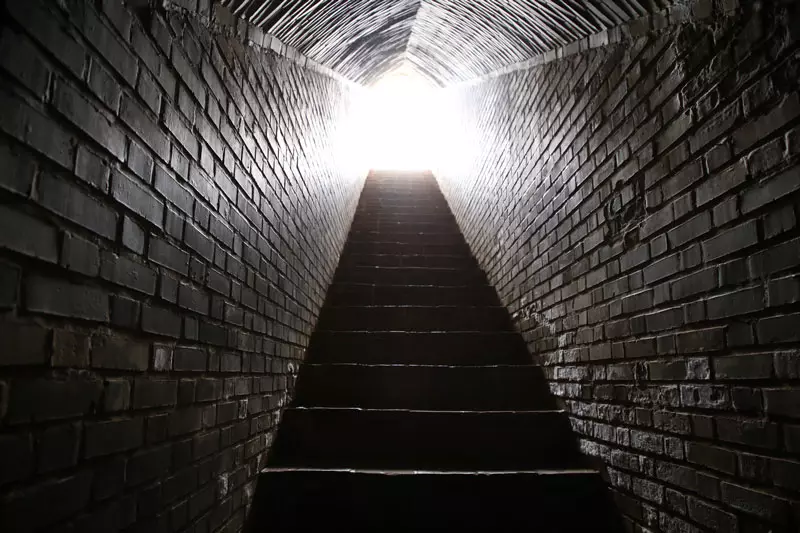
Best Time to Visit Qasabeh Qanat:
Gonabad is situated in a semi-desert region on the outskirts of the central Iranian desert. The area experiences hot summers and cold winters, with a significant temperature difference between day and night. The best season for a trip to Gonabad and a visit to Qasabeh Qanat is spring.
Exploring the architecture and various sections of Qasabeh Qanat provides insights into ancient water engineering marvels and the ingenuity of the people who designed and constructed this remarkable qanat system.
Accommodation during a Visit to Qasabeh Qanat:
Fortunately, you won’t face any accommodation issues when visiting Qasabeh Qanat in Gonabad. The hotels in Gonabad are well-prepared to host travelers visiting the city. Additionally, eco-lodges in Gonabad and its surroundings can be a great idea for a pleasant stay alongside an exciting journey. Here are names of some of these lodges:
Qasabeh Qanat Documentary:
The documentary on Qasabeh Qanat, commissioned by UNESCO and produced in collaboration with the Khorasan Razavi Provincial Radio and Television, and the Cultural Heritage, Handicrafts, and Tourism Organization of the province, effectively portrays the engineering capabilities of Iranian diggers. This 70-minute documentary is based on the several-year travels of Henri Goblot, a French researcher, in the mid-20th century and his visits to Iran’s qanats.
Attractions around Qasabeh Qanat:
Gonabad Jameh Mosque:
Address: Khorasan Razavi Province, Gonabad, Bahar Street, Bahar 3 or Bahar 5 Alley
Visitation cost (in 1402): Free
Distance from Qasabeh Qanat: Approximately 2 kilometers (4 minutes by car)
Gonabad Jameh Mosque, dating back to the Khwarazmian era, consists of a two-iwan plan, including sections like the decorated porch, the courtyard or meydan-sara, the north and south iwans, a portico, and three columned Shabestans. The main iwan or Qibla iwan is located in the southern part of the mosque’s courtyard. The name of the builder and founder of the mosque is inscribed on the plaque inside the iwan. The main iwan of Gonabad Jameh Mosque features geometric and floral patterned mihrabs and suspended inscriptions. In the eastern side of the eastern iwan, the Shabestan Quran is located, with its ceiling resting on four columns. Gonabad Jameh Mosque, numbered 325 in the national heritage list of the country, is considered one of the tourist attractions of Gonabad.
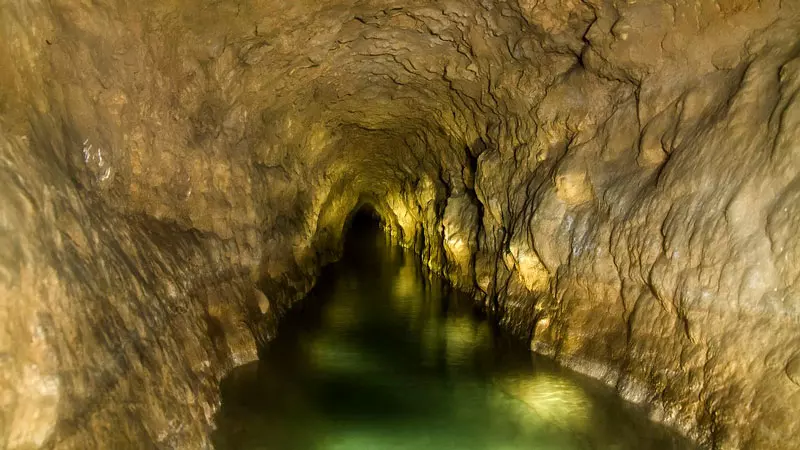
Riyab Village:
Address: Khorasan Razavi Province, Gonabad County, Central District, Riyab Village
Visitation cost (in 1402): Free
Distance from Qasabeh Qanat: Approximately 7 kilometers (15 minutes by car)
Riyab Village, positioned about 6 kilometers west of Gonabad, is designated as a tourist destination. Like other areas in Gonabad, it has a warm and dry climate due to its proximity to the Iranian desert. Therefore, the majority of the water needed for agriculture in the village is supplied from the qanat. Riyab Village, locally known as “Ryu,” has a documented history of a thousand years, making it one of the oldest rose villages in the country. In 2008, it was registered in the national heritage list of our country. Notable attractions in Riyab Village include the village’s castles and the Naserian House.
Frequently Asked Questions:
Where is Qasabeh Qanat located?
Qasabeh Qanat is located in Gonabad County, Khorasan Razavi Province, three kilometers south of Gonabad city.
What is the depth of the Qasabeh Qanat well?
The depth of the Qasabeh Qanat well is 340 meters.
How long is Qasabeh Qanat in Gonabad?
The length of Qasabeh Qanat in Gonabad is 33 kilometers.
What are the visiting hours for Qasabeh Qanat?
Qasabeh Qanat is open for visits every day from 8:00 to 13:00. In case you encounter closed gates, contact the qanat guide’s phone number.

